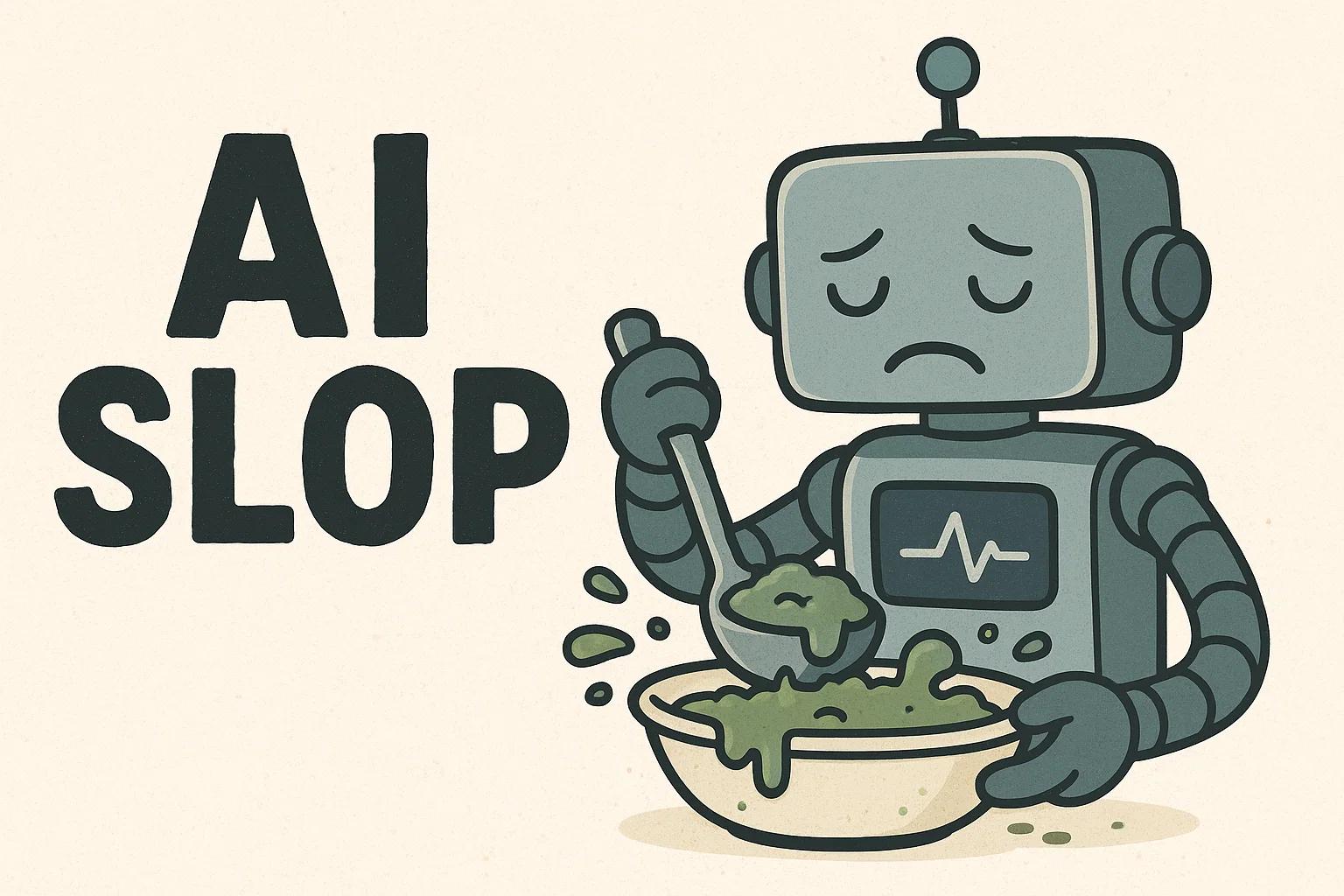
AI Slop: The Byproduct of a Rushed Future
As AI tools become widespread, so does a new kind of digital pollution: AI slop. This post explores how thoughtless, mass-generated content is flooding the web, why it matters, and how we can use AI with more purpose, clarity, and creativity.
Introduction
Artificial intelligence is everywhere. It writes our emails, assists with our code, generates our images, and fills our feeds. What once felt futuristic is now routine. But alongside its usefulness, something unintended is spreading across the web: AI slop.
This isn’t a failure of AI itself. It is a side effect of how carelessly we use it. AI slop is the digital equivalent of processed fast food. It is content generated for volume rather than value. It appears polished on the surface but often lacks depth, clarity, or originality. And it is growing fast.
What Is AI Slop
AI slop refers to content produced by artificial intelligence that is low in quality, high in quantity, and largely devoid of purpose or perspective. It includes blog posts that repeat generic advice without any human insight. It includes artwork that mimics style but fails to express feeling. It includes code pasted into projects without context, understanding, or review.
The defining trait of slop is not the fact that it was created by AI. It is that no real thinking was involved in its use. The human behind the machine has stepped away, and the result is content that looks like it means something but says very little.
Why It Matters
At first glance, AI slop may seem harmless. A boring article or a generic image might not feel like a big problem. But when this type of content starts filling our search results, training our models, and shaping our expectations, it becomes harder to ignore.
AI slop pollutes the information ecosystem. It weakens trust in what we read and see. It floods platforms with repetition and noise, making it harder for genuine insight or creativity to be heard. It also forms a feedback loop. Sloppy content gets scraped and fed back into AI training data, lowering the quality of the next generation of tools.
This cycle is quiet but dangerous. When we automate the act of creation without curating its purpose, we begin to dull the very intelligence we set out to enhance.
The Moment AI Stops Being Smart
AI is a tool. A powerful one. But tools reflect how they are used. When creators hand off responsibility to automation and stop asking questions, the result is not innovation. It is imitation. Generating text is easy. Communicating a meaningful idea is not.
The risk is not that AI replaces us. The risk is that we allow ourselves to stop thinking. It is tempting to automate the creative process, but creativity is not mechanical. It is built from attention, curiosity, and lived experience, none of which can be generated by a prompt alone.
Choosing Clarity Over Convenience
Fighting against AI slop does not mean rejecting AI. It means being more deliberate. It means using AI to assist, not to replace. It means editing what it gives you, challenging its assumptions, and adding your perspective before pressing publish.
It also means slowing down. The internet rewards speed and quantity, but what it truly needs is clarity. A single thoughtful piece of content carries more value than a thousand generated ones with no voice behind them.
🎯 Final Thoughts
AI mirrors the mindset of its user. If we treat it as a shortcut, it will reflect that. If we treat it as a collaborator, we can elevate our thinking rather than bypass it.
We are entering an age where content is easy to create and hard to trust. In that environment, originality, honesty, and precision become more powerful than ever. We do not need more content. We need more care.
What we choose to create today shapes the internet of tomorrow. The tools are not to blame. The question is whether we are willing to use them with intention.